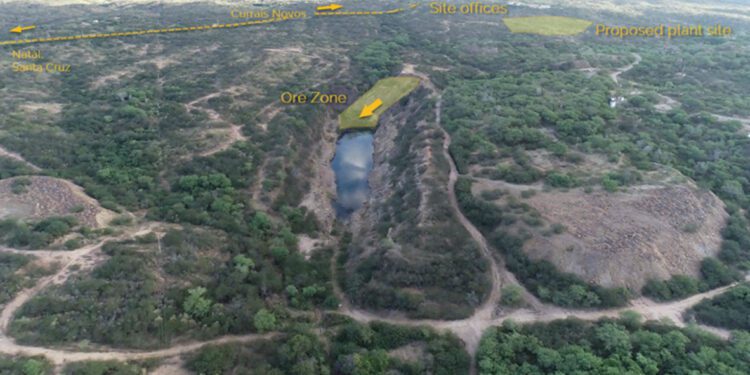Big River Gold Limited (ASX:BRV) has received positibe results of the Dynamic Water Balance (DWB) studies completed by SRK Consulting (SRK) and the ongoing water management programme to provide water security for the Borborema Gold Project (BGP or Project) in Brazil.
The results provide the company with a potential to increase the plant throughput from that previously reported in July 2020 . Importantly, the DWB study has established water management plans for the Project that indicates minimal additional external water will be required to support a two million tonnes per annum (Mtpa) operation.
Extending this model and given the rehabilitation of the Currais Novos sewage facilities is progressing well, water supplies available from Currais Novos are considered sufficient to support the expansion of plant throughput up to approximately 4Mtpa.
The question of water management has also been addressed in conjunction with the DWB in the engineering design currently being undertaken for the Engineering Cost Estimate (ECE).
This includes assessment of the water filtration from tailings, site wide drainage and water storage and various equipment options that better reduce water loss and increase water re-capture.
Dynamic Water Balance
A Dynamic Water Balance study for Borborema completed by SRK identified extended periods when no additional water is required from offsite to support a 2Mtpa operation.
Sensitivity analyses of the model demonstrated that in average conditions an occasional peak shortfall of approximately 35m3 /hour of process water may be required to be sourced from offsite to support a 2Mtpa plant.
These short term demands occur in under 10% of the modelled climatic conditions based on analysis of the historical data by SRK. This equates approximately to a one in 10 year dry year, the impact of which could be mitigated by several water conservation options and incorporation of the small Sao Francisco Dam into the Fines Dyke.
Seven scenarios and three sub-scenarios were evaluated in SRK’s study. Incorporated into these were the possible water savings to be obtained by employing evaporation control methods of which the most common technique uses floating covers.
In Brazil, using PET plastic bottles as floating covers has reduced evaporation by up to 72% with 80% of the dam area covered. These scenarios established that the most effective way of reducing any site process water deficit (in order of impact) were:
1. Delivery of sewage water from Currais Novos;
2. Implementation of evaporation reduction methods, and
3. Enlargement of the Fines Dyke storage capacity. Early decommissioning of the Sao Francisco dam would increase storage to the Fines Dyke, reduce overall evaporation and may also lead to increased water flow without increase in the height of the Fines Dyke dam wall.
Water sourced from borefields in the district would also improve site water management and this potential is being investigated.
• Scenarios E1 and E2 required less greywater inflow than the baseline scenarios to assure the supply of the water demand even in dry years. Scenario E1 required less sewage compared to scenario E2.
• Scenario F which employed a combination of water management actions did not need to include the greywater to supply the demand.
For further information please visit: https://www.bigrivergold.com.au/












